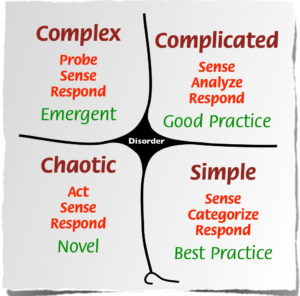In every family, problems are bound to come up quite often. Whether it’s deciding what movie to watch, navigating conflicts between siblings, or making bigger decisions that impact the whole household, being able to solve problems together as a family is an important skill.
This article will explore practical tips and strategies for how families can constructively approach problems, communicate effectively, and find solutions that work for everyone involved.
Why Is It Important for Families to Solve Problems Together?
Families are teams. Just like workers on a job site or players on a sports team, family members need to be able to cooperate, strategize, and resolve issues to run smoothly.
When families can’t solve problems together effectively:
- Conflicts and tensions can build up over time
- Important decisions may get put off or made unilaterally
- Individual family members may feel unheard or unsupported
In contrast, families who make an effort to solve problems collaboratively tend to benefit in several ways:
👪 Stronger Relationships: Going through the process of working through a problem together can bring family members closer. It builds trust, understanding, and appreciation for each other’s perspectives.
🧠 Better Solutions: By combining their different viewpoints and ideas, families can often arrive at more creative and well-rounded solutions than any one person could on their own.
💪 Shared Commitment: When everyone has a voice in the solution, they’ll be more bought into actually following through on it.
Typical Family Problems and Challenges
Some common problem areas that families may need to tackle together include:
- Household Rules & Responsibilities – Dividing up chores, curfews, screen time limits, etc.
- Schedules & Logistics – Coordinating everyone’s activities, carpooling, family calendar, etc.
- Budgeting & Finances – How to spend or save money, pay for expenses, etc.
- Family Events & Traditions – Planning holidays, vacations, celebrations, etc.
- Sibling Conflicts – Resolving disputes or disagreements between brothers and sisters
- Major Family Decisions – Moving homes, changing jobs or schools, etc.
Setting the Right Tone
Before diving into problem-solving mode, it’s important to set the right tone. Some tips:
✌️ Stay Calm – Don’t start an important conversation when emotions are running high. If things get heated, take a break.
👂 Listen First – Make sure everyone feels heard before trying to come up with solutions.
🤝 Cooperate, Don’t Compete – This isn’t about one person or side “winning.” The goal is to find an outcome everyone can live with.
😃 Keep It Positive – Use humor, praise efforts, and remind everyone you’re all on the same team.
Active Listening Skills
One key to effective problem-solving is making sure all parties feel understood. This means going beyond just passively hearing each other, and actively listening.
Some active listening techniques include:
- Repeat back what you heard the person say, to confirm your understanding
- Ask follow-up questions to gain clarity
- Don’t interrupt or plan your response while the other person is talking
- Pay attention to body language and tone as well as words
- Avoid judgmental statements, let the person speak without criticism
Brainstorming and Considering All Perspectives
Once everyone has had a chance to explain their viewpoint, it’s time to start generating potential solutions. The best approach is to:
Brainstorm First, Analyze Later
In the brainstorming phase, the idea is to get as many possible solutions out on the table as you can, without judging or evaluating them yet. Wild, creative, or even silly ideas are welcome!
Write them all down where everyone can see them. Then, once you have a good list, you can go through and discuss the pros and cons of each potential solution.
It’s important to seriously consider everyone’s perspective, not just the adults or most vocal family members. Some helpful questions to ask:
- “How would this solution impact you?”
- “What do you like or dislike about this idea?”
- “If we did it this way, would you be able to go along with it?”
A research study of 250 families who went through counseling found that the families who were most successful at resolving conflicts:
✅ Let every family member have a turn to speak uninterrupted
✅ Asked questions to understand each other’s motivations
✅ Brainstormed multiple potential solutions before deciding
✅ Checked in with each other on how they felt about the final decision
Finding Win-Win Solutions
The overall goal is to find a solution that addresses the core needs and concerns of everyone involved – a true “win-win” outcome.
This may require some creative compromise and looking for ways to make the solution work for all parties. But it’s worth the effort to avoid a situation where some family members feel like their needs got ignored or overruled.
| Don’t Do This ⛔ | Do This ✅ |
|---|---|
| The parents decide everything unilaterally | Solutions are decided collaboratively |
| Only one viewpoint is considered | Everyone’s perspective is heard |
| The same few people get their way | There are trade-offs to make it fair |
Some techniques that can help find that win-win solution:
💡 Look for Unconventional Ideas – Think outside the box of typical solutions
🔁 Try a Compromise – If two ideas are in conflict, is there a middle ground?
🤝 Make Contingencies – “We’ll try this solution, but if issues X and Y come up, we’ll switch to plan B”
Implementing Solutions and Checking In
Even a great solution is only as good as the follow-through. Make sure roles, responsibilities, and next steps are clearly defined when implementing the agreed-upon solution.
Additionally, set some future check-in points to assess how the solution is working once it’s been given a chance. Be willing to re-evaluate and adjust course if needed.
Some families even implement a weekly or monthly “Family Council” meeting to allow a regular forum to check in, discuss any new issues that come up, and make sure everyone still feels bought into past decisions.
TL;DR
To effectively solve problems together as a family:
- Make sure every family member’s perspective is heard and valued
- Brainstorm multiple potential solutions before evaluating
- Strive to find win-win solutions that address everyone’s core needs
- Implement solutions, check in regularly, and be willing to adapt
Working through problems collaboratively deepens relationships, leads to better solutions, and gets greater buy-in from all family members.
Q&A
Q: What if family members really can’t agree on a solution?
A: Sometimes compromise just isn’t possible. If that’s the case, consider bringing in an impartial third-party mediator, like a trusted relative or counselor. Their outside perspective may help identify solutions you couldn’t see. Ultimately though, the parents may need to make the final ruling in some cases – but they should strive to at least take everyone’s viewpoint into account.
Q: How can you get young kids engaged in family problem-solving?
A: Make it an interactive process – get down on their level, use visuals and hands-on materials like drawing solutions, role-playing scenarios, etc. Tailor your language to their age, without talking down to them. And remember that even young kids can have insightful thoughts when you create an environment for them to express their perspectives.
Q: What are signs that a family is bad at solving problems together?
A: Warning signs include one or two family members dominating and not listening to others, frequent outbursts of anger or stonewalling during discussions, inability to reach compromises, and unilateral decisions that leave people feeling resentful. If you see these patterns, it may be time to reset expectations around family problem-solving.





